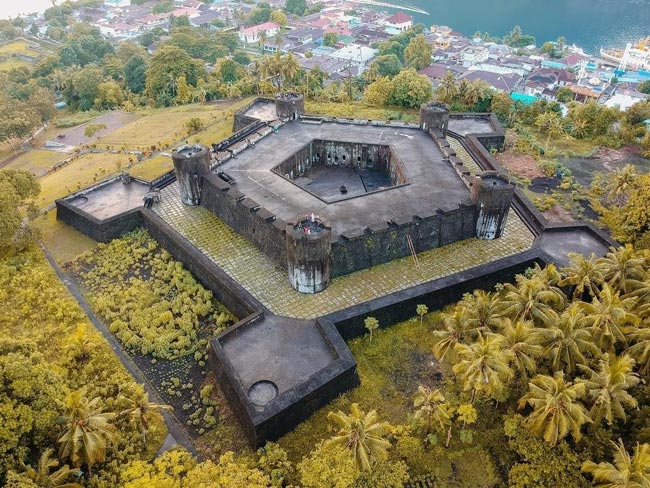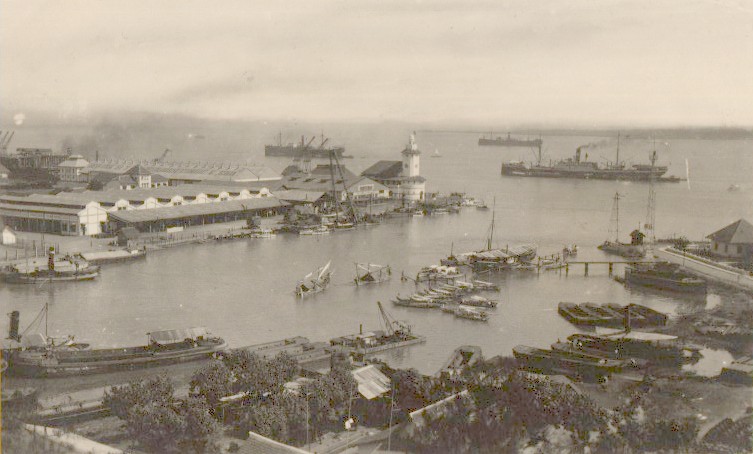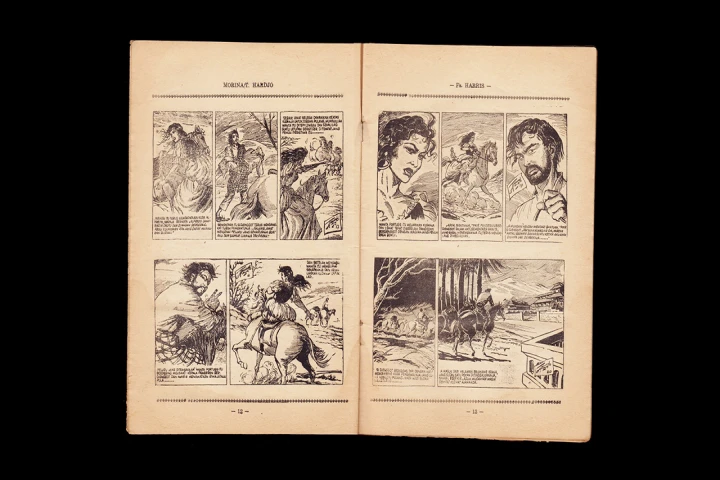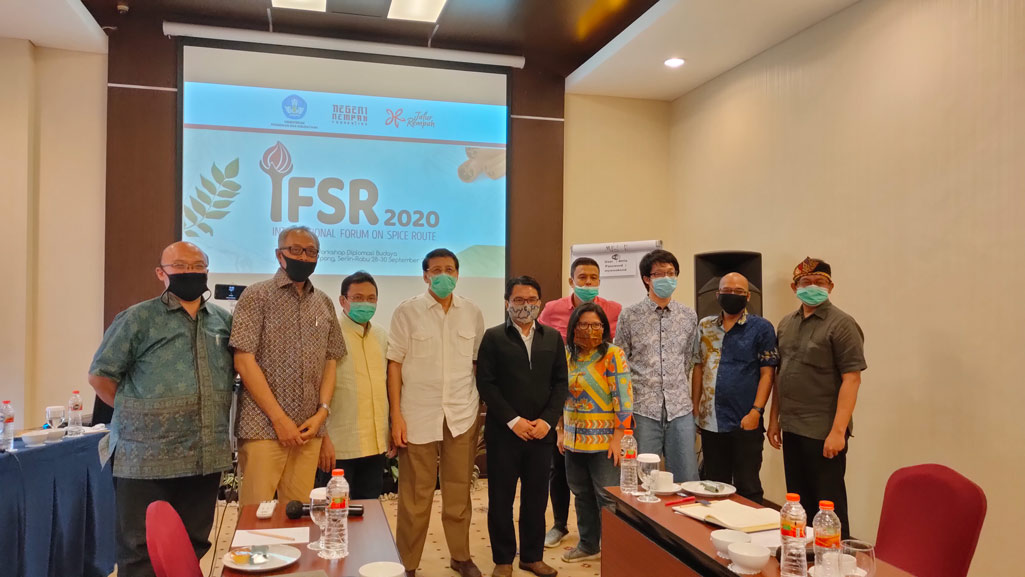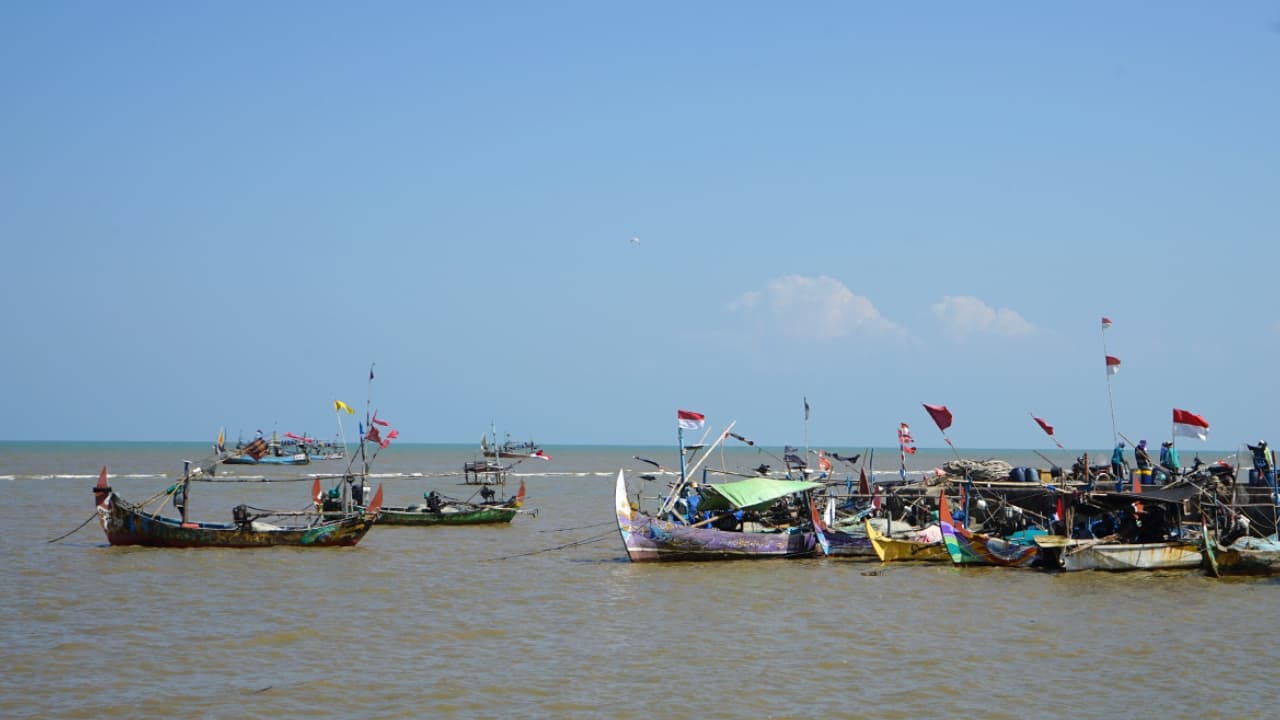
Kaparinyo lagu rang Padang. Ambiak salendang baok manari. Ulasan nyao yo nan lah datang. Untuak pambujuak yo badan diri.
(Kaparinyo the people of Padang’s song. Take the shawl and dance. When the soul’s gathered. Luring the body to move.)
The strains of violin and accordion, along with other instruments, accompanied the dance on the stage. Eight people were dancing, men and women, holding hands and making a circle while moving, following the music. They stood face to face, dancing by following the cue from the leader. It was super fun that I moved my body. A thought crossed my mind, is it how it feels to see Quadrille dance from Europe live? But the delicate music reminded me that I was in Padang, and it is one of Indonesia's wealth. A culture from Padang, Balanse Madam dance with gamat music in the background.
As a part of Padang culture, Balanse Madam dance is a product of acculturation from multiple cultures. Formerly, the dance was performed by Nias people in Padang, the movements similar to European dance and accompanied by music as a mix of Minangkabau, Portuguese or Europe, and Malay. The dance is performed as entertainment and an event to tighten social interaction. Balanse Madam dance is usually performed during customary events, namely village head appointments, weddings, and nagari events. It can be inferred that the dance is a traditional dance coming from Seberang Palinggam, Padang.
Digging from the root, Balanse consists of two words "Ba" and "Lanse". In Minangnese, "Ba" means "To" and "Lanse" in Portuguese means "Dance", and the word "Madam" means "Madam". Combined together, Balanse Madam means a dance for a daughter or madam of the nobles. However, another meaning suggests that it is a balanced or proportionate dance among the dancers if the word "Balanse" is interpreted as "balance".
Balanse Madam dance is performed by four or more people in even numbers and pairs between men and women. Formerly, the ones who could dance were only married couples with no kinship among dancers. Nowadays, anyone can dance regardless of their marital status. In the dance, there's a commander or leader. The commander must give instruction or cues of the eleven movements order in the Balanse Madam dance.
The movement in the dance begins and ends with all dancers shaking hands with the chieftain or the elder. The floor pattern of dance is a circle, and every position has a name, the Top Dancers position (dancers in the north and south) and Lateral Dancers position (dancers in the west and east). Dancers can change positions, roles, and partners since there are swaps in the movement.
Singing Kaparinyo Pantun with Gamat Music
Balanse Madam dance wouldn't be complete without gamat music. The instruments used in the dance include woodwind, brass, violin, tambourine, accordion, and 4/4 rhythm and diatonic notes drum. According to A. A. Navis, gamat music is presumed to be brought by the Portuguese through Malay sailors from Malacca, seen from the use of violin and accordion as the physical form of European culture and Kaparinyo song. However, some people think that the Portuguese brought the music from Malacca, supported by the Portuguese community that had become a community on the Minangkabau coast, and they also supported gamat music.
There are two tempi in gamat music, langgam tempo for the slow dance and joget tempo for fast dance. The number of musicians in gamat music depends on the number of instruments. The type of music depends on the violin; unfortunately, the violinist is rarely found, so is the accordionist. The high price of the violin and the small number of people who possess the instrument is to blame. So, today, a solo organ is used as the Balanse Madam dance accompaniment, supported by the high use of the solo organ to accompany other events. Kaparinyo pantun is often used in Balanse madam dance along with gamat music.
Kaparinyo lagu rang Padang (Kaparinyo the people of Padang’s song)
Ambiak salendang baok manari (Take the shawl and dance)
Ulasan nyao yo nan lah datang (When the soul’s gathered)
Untuak pambujuak yo badan diri (Luring the body to move)
If the pantun above is presented in gamat music, the structure will be different, for the singer must adjust the music arrangement. According to people, the song is the Portuguese's legacy and played in joget tempo. The meaning of kaparinyo is still a mystery, for it did not come from the Minangkabau language. It doesn't deprive the historical meaning of kaparinyo song for the gamat musician, so it becomes the opening song in gamat music performance.
Betel nut or betel leaf, sadah or camphor, and gambier, which are offerings used by the people of Nusantara when they conduct a ceremony, are also presented in Balanse Madam dance. Before performing Balanse Madam dance, permission must be granted, tuo kafo who performs as janang asks permission to kafalo kafo. When asking for permission, some conditions must be completed; carano (cerana) filled with betel nut, betel leaf, sadah or camphor, gambier, tobacco, and occasionally cigarettes and money. Besides carano complete with the content, there are also tuo nifaro, sopi, or tuak [palm wine]. As a sign the drink is accepted, the elderly will drink tuo nifaro in turn, starting from kafalo kafo, tuo kafo, ninik mamak, and community leaders.
In Balanse Madam dance, Portuguese culture or the Westerners' dance culture is performed with the same costume as the Malay clothes. It is also accompanied by gamat music that consists of instruments from several cultures. It enriches Padang cultures, and thus, the spice routes and activities determine the faith of a certain place and its community, including the culture.
The spice routes are overly long and confusing routes, and the detail is hard to understand in world history. Researchers continue to illustrate and sequence the spice routes clearly. The courses have imprinted many memories and changes for each sojourn area. Actually, not many places in Indonesia are recorded in history books as the transit points of the spice hunter ships. However, there are many findings nowadays that function as proof of spice routes' influence on the cultures in Indonesia.
Balanse Madam, a dance that takes a part in the influence of the spice routes. It is an art that belongs to the people of Nias in Padang or is often called Nias Padang. Nias is a tribe on the west coast of Sumatra Island. However, in 1520, the Portuguese ran an expedition under Captain Diego Pachego to find "isla de ouro" or the legend of the golden island. They circled Sumatra towards Nias, while in fact there was no gold in Nias. Following this, the Dutch's turn came to take an adventure to Nias. The human trafficking market emerged, Nias girls, who had a reputation for their beauty, were traded to become mistresses or slaves. They were brought to follow their masters, including to Padang.
It comes as no surprise that Padang has cultures as products of acculturations. Padang is the essential port on the west coast of Sumatra Island. Many residents from the surrounding area came to Padang to trade with VOC. In addition to the VOC or the Dutch's trades, the traders from England, France, and China also took part in the sojourn in Padang. By that, Padang is not only dwelled by the native inhabitants but also a number of outlanders. From a fishing village, Padang transformed into an international trade port.
Since the 16th century, the high demand for pepper in the seaports on the west coast of Sumatra by the Chinese to be exported to Europe increased Minangkabau people's mobility and the surrounding areas. From island to island and coast, the trade network led Padang Port to reach Tello Island, Nias. Thereby, the Nias tribe began to come. They worked as laborers, thatch roof makers, or craftsmen. With the increase of Nias residents' mobility, they began to settle and live in a particular area in Padang, and today it is still known as Kampung Nias.
_______
The article is one of the top 10 winners’ works in the Bumi Rempah Nusantara untuk Dunia Writing Competition 2021. The article has gone through an editing process for publication on this page.
_______
Putri Wanggay, writer and cultural activist.
Editor: Tiya S.
Translator: Dhiani P.
Illustrated by Redaksi Jalur Rempah



